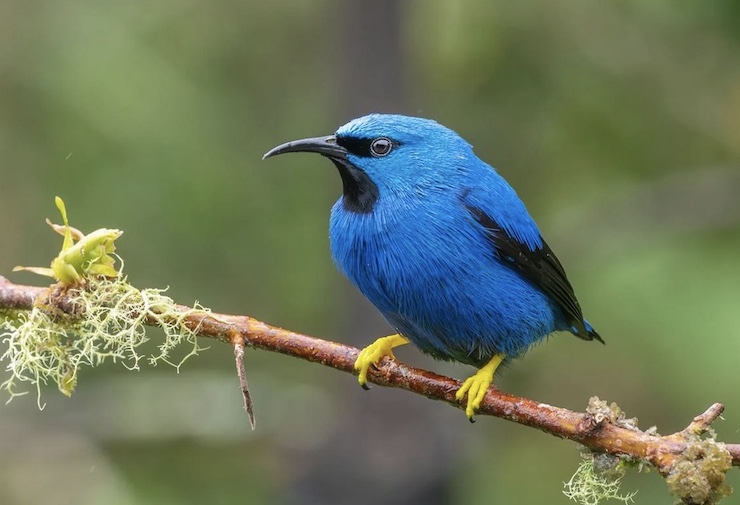
With approximately 3,600 species, mosquitoes can be found everywhere on the planet except Antarctica and a handful of islands with subpolar climates. During the warmer, wetter months, mosquitoes are most prevalent, while in subtropical and tropical environments they are active year-round. For most people, mosquitoes are a nuisance; for some, they can be deadly. With an average of 1 million deaths each year attributed to mosquito-borne infections, mosquitoes are considered the deadliest creatures on Earth.
Humans are not the only ones affected by mosquito-borne infections. When mosquitoes bite animals such as pets, livestock, or wildlife, these animals can become infected and sometimes die. Mosquitoes have greatly impacted honeycreepers, a colorful songbird endemic to the Hawaiian archipelago. At one time, more than 50 species of these small birds called the Hawaiian Islands home. Today, conservationists estimate that only 17 species of Hawaiian honeycreepers remain.
The remaining birds are on the precipice of further decline due to avian malaria. Many bird species worldwide are susceptible to avian malaria, which can cause a range of symptoms, many of which are asymptomatic. For Hawaiian honeycreepers, mosquito-transmitted avian malaria is causing drastic population declines. Hawaii is home to eight species of mosquitoes, two of which, the southern house mosquito and the Asian tiger mosquito, are devastating honeycreepers.
In an effort to control the population of these invasive mosquitoes, biologists breed sterile male mosquitoes in a lab. They are then released into the wild to mate with females, who will lay sterile eggs. A collaboration between federal, state, private, and nonprofit organizations has teamed up to release these mosquitoes in a project called Birds Not Mosquitoes. The project began in 2023 and has resulted in the release of more than 40 million sterile male mosquitoes into honeycreeper habitats.
At first, the mosquitoes were being released from a helicopter. But Adam Knox from the American Bird Conservancy, who is managing the project, said that the coalition was keen to find an alternative method. Dropping the mosquitoes by helicopter requires at least two people, a pilot and someone to drop the pods, putting them at risk. Helicopters are also limited in the regions they can access, are not environmentally friendly, and are extremely expensive. As a licensed drone pilot, Adam knew of a better solution.
The project is now trialing the use of drones to drop mosquito pods in honeycreeper habitats. Adam explained that large drones, specially modified to withstand the warm, wet conditions of Hawaii’s tropical forests, carry the pods over the habitats. Being smaller than a helicopter, the drones can access far greater regions of the forest for optimal deposits. Once in position, a mechanism on the drone releases a controlled number of pods which then “fall to the forest floor where they provide protection to the mosquitoes until they’re ready to fly away,” Adam said. ‘The pods then begin to break down once exposed to the elements.”
Adam points out that although the drones cannot carry nearly as many mosquitoes as a helicopter (23,000 individuals compared to 250,000), their benefits outweigh this drawback. No people have to put their lives at risk by entering a helicopter. The drone costs a fraction of the price, can be deployed at a moment’s notice, and has a much smaller carbon footprint. This is not the first time drones have been used in this capacity.
Throughout the United States and the global community, drones are used to release pods of sterile male mosquitoes during peak mating seasons to curb excess populations and the spread of diseases like dengue. However, Hawaii’s Birds Not Mosquitoes project is unique in that it is specifically aimed at species conservation efforts. “Once fully integrated,” Adam said, “drones could expedite mosquito releases and give these birds a better chance to survive.”
The innovative use of drones to release sterile mosquitoes represents a promising step forward in the fight to save Hawaii’s native honeycreepers from extinction. By combining cutting-edge technology with conservation science, the Birds Not Mosquitoes project offers a scalable, safer, and more environmentally friendly solution to a complex ecological problem. While challenges remain, this approach provides hope that these iconic birds will continue to thrive in Hawaii’s forests for generations to come.
|